- Home
- Gaston Leroux
Phantom of the Opera (Barnes & Noble Classics Series)
Phantom of the Opera (Barnes & Noble Classics Series) Read online
Table of Contents
From the Pages of
Title Page
Copyright Page
Gaston Leroux
The World of Gaston Leroux and
Introduction
PROLOGUE
Chapter 1 - IS IT THE GHOST?
Chapter 2 - THE NEW MARGARITA
Chapter 3 - THE MYSTERIOUS REASON
Chapter 4 - BOX FIVE
Chapter 5 - THE ENCHANTED VIOLIN
Chapter 6 - A VISIT TO BOX FIVE
Chapter 7 - FAUST AND WHAT FOLLOWED
Chapter 8 - THE MYSTERIOUS BROUGHAM
Chapter 9 - AT THE MASKED BALL
Chapter 10 - FORGET THE NAME OF THE MAN’S VOICE
Chapter 11 - ABOVE THE TRAP-DOORS
Chapter 12 - APOLLO’S LYRE
Chapter 13 - A MASTER-STROKE OF THE TRAP-DOOR LOVER
Chapter 14 - THE SINGULAR ATTITUDE OF A SAFETY-PIN
Chapter 15 - CHRISTINE! CHRISTINE!
Chapter 16 - MME. GIRY’S ASTOUNDING REVELATIONS AS TO HER PERSONAL RELATIONS ...
Chapter 17 - THE SAFETY-PIN AGAIN
Chapter 18 - THE COMMISSARY, THE VISCOUNT AND THE PERSIAN
Chapter 19 - THE VISCOUNT AND THE PERSIAN
Chapter 20 - IN THE CELLARS OF THE OPERA
Chapter 21 - INTERESTING AND INSTRUCTIVE VICISSITUDES OF A PERSIAN IN THE ...
Chapter 22 - IN THE TORTURE CHAMBER
Chapter 23 - THE TORTURES BEGIN
Chapter 24 - “BARRELS! ... BARRELS! ... ANY BARRELS TO SELL?”
Chapter 25 - THE SCORPION OR THE GRASSHOPPER: WHICH?
Chapter 26 - THE END OF THE GHOST’S LOVE STORY
EPILOGUE
PUBLISHER’S NOTE ON THE PARIS OPERA HOUSE, FROM THE ORIGINAL AMERICAN EDITION ...
Endnotes
Inspired by
Comments & Questions
For Further Reading
From the Pages of
The Phantom of the Opera
The Opera ghost really existed. He was not, as was long believed, a creature of the imagination of the artists, the superstition of the managers, or a product of the absurd and impressionable brains of the young ladies of the ballet, their mothers, the box-keepers, the cloak-room attendants or the concierge. Yes, he existed in flesh and blood, although he assumed the complete appearance of a real phantom; that is to say, of a spectral shade.
(page 5)
Daaé revealed a new Margarita that night, a Margarita of a splendour, a radiance hitherto unsuspected. The whole house went mad, rising to its feet, shouting, cheering, clapping, while Christine sobbed and fainted in the arms of her fellow-singers and had to be carried to her dressing-room. A few subscribers, however, protested. Why had so great a treasure been kept from them all that time?
(page 21)
“Did your father tell you that I love you, Christine, and that I can not live without you?”
(page 54)
Moncharmin’s hair stood on end. Richard wiped the perspiration from his forehead. Yes, the ghost was there, around them, behind them, beside them; they felt his presence without seeing him, they heard his breath, close, close, close to them!
(page 78)
“There is a terrible mystery around us, madame, around you, around Christine, a mystery much more to be feared than any number of ghosts or genii!”
(page 101)
“And he will tell me that he loves me. And he will cry! Oh, those tears, Raoul, those tears in the two black eye-sockets of the death’s head! I can not see those tears flow again!”
(page 115)
“Blood! ... Blood! ... Here, there, more blood! ... That’s a good thing! A ghost who bleeds is less dangerous!”
(page 138)
It was at that moment that the stage was suddenly plunged in darkness. It happened so quickly that the spectators hardly had time to utter a sound of stupefaction, for the gas at once lit up the stage again. But Christine Daaé was no longer there!
(page 142)
“No, that’s impossible. For I dropped you in my cab. The twenty-thousand francs disappeared at your place: there’s not a shadow of a doubt about that.”
(page 168)
He hit upon astonishing inventions. Of these, the most curious, horrible and dangerous was the so-called torture-chamber. Except in special cases, when the little sultana amused herself by inflicting suffering upon some unoffending citizen, no one was let into it but wretches condemned to death.
(page 211)
We were beginning literally to die of heat, hunger and thirst ... of thirst especially. At last, I saw M. de Chagny raise himself on his elbow and point to a spot on the horizon. He had discovered an oasis!
(page 231)
And what else could Christine say but no? Would she not prefer to espouse death itself rather than that living corpse? She did not know that on her acceptance or refusal depended the awful fate of many members of the human race!
(page 235)
“I saved your life! Remember! ... You were sentenced to death! But for me, you would be dead now! ... Erik!”
(page 242)
“We cried together! I have tasted all the happiness the world can offer!”
(page 249)
Published by Barnes & Noble Books
122 Fifth Avenue
New York, NY 10011
www.barnesandnoble.com/classics
Le Fantôm de l’opéra was first published in 1910. The present translation of The
Phantom of the Opera first appeared in 1911 and remains anonymous.
Published in 2007 by Barnes & Noble Classics with new Introduction,
Notes, Biography, Chronology, Inspired By, Comments & Questions,
For Further Reading, and Illustrations.
Introduction, Notes, and For Further Reading
Copyright © 2007 by Isabel Roche.
Note on Gaston Leroux, The World of Gaston Leroux and The Phantom of
the Opera, Inspired by The Phantom of the Opera, Comments & Questions, eight
illustrations by Rachel Perkins, and map of Paris by Jeffrey L Ward.
Copyright © 2007 by Barnes & Noble, Inc.
All rights reserved. No part of this publication may be reproduced or transmitted
in any form or by any means, electronic or mechanical, including photocopy,
recording, or any information storage and retrieval system, without the
prior written permission of the publisher.
Barnes & Noble Classics and the Barnes & Noble Classics
colophon are trademarks of Barnes & Noble, Inc.
The Phantom of the Opera
ISBN-13: 978-1-59308-249-9
ISBN-10: 1-59308-249-5
eISBN : 978-1-411-43290-1
LC Control Number 2005937673
Produced and published in conjunction with:
Fine Creative Media, Inc.
322 Eighth Avenue
New York, NY 10001
Michael J. Fine, President and Publisher
Printed in the United States of America
QM
1 3 5 7 9 10 8 6 4 2
FIRST PRINTING
Gaston Leroux
Before Rupert Julian’s 1925 film adaptation of The Phantom of the Opera, few knew much about the novel it was based on or the work’s original author, Gaston Leroux. One of the most popular detective and mystery authors of his time, Leroux was born in Paris in 1868 and attended a boarding school in Normandy, the College d‘Eu, from which he received his baccalaureate in 1886. A talented student, Leroux attended law school in Paris, though he was not to practice law for long. Aw
arded a law degree in 1889, he was by 1891 working full-time as a journalist, writing arts criticism and reporting on court cases for the paper L’Écho de Paris.
Leroux’s skills impressed the editors at the popular daily Le Matin, and they hired him in 1894 as a roving correspondent and investigative reporter. Adventurous, even fearless, Leroux would stop at nothing to get the best take on a story and sometimes donned disguises to pursue promising leads. He relished work on location in Africa, Europe, and Asia, and was a first-hand witness to the Russian Revolution of 1905. His personal life was unconventional; estranged from his wife, he lived for many years with Jeanne Cayatte, a woman he met in 1902 but did not marry until 1917. The couple had two children.
Leroux achieved major success as a fiction writer with the publication of Le Mystère de la chambre jaune (1907; The Mystery of the Yellow Room) and the sequel Le Parfum de la Dame en noir (1908-1909; The Perfume of the Lady in Black), which featured popular character Joseph Rouletabille, an investigative reporter. Beginning in 1909, The Phantom of the Opera was published serially in the newspaper Le Gaulois. Sales were small, reviews were lukewarm, and there was little evidence that the work would outlive its first printings or eclipse the fame of Leroux’s other titles. But in 1925, as the cinema became increasingly popular, Universal Studios adapted Phantom for the silent screen. The film was a success, the first of more than a dozen adaptations of Phantom produced in the twentieth century, including Andrew Lloyd Webber’s long-running musical, which premiered on Broadway in 1988 and is still running. The author lived to see the world rediscover his horrifying mystery, although he perhaps could not have foreseen its ultimate longevity. Gaston Leroux died in 1927 in Nice, France.
The World of Gaston Leroux and
The Phantom of the Opera
1841 One of the works that will greatly influence Gaston Leroux’s writing—Edgar Allan Poe’s The Murders in the Rue Morgue—is published.
1868 Gaston Louis Alfred Leroux is born on May 6 in Paris to Dominique-Alfred Leroux and Marie Bidault.
1871 Lewis Carroll’s Through the Looking Glass is published. The Royal Albert Hall opens in London.
1872 George Eliot’s Middlemarch is published in book form.
1874 French novelist and critic Jules-Amédée Barbey d‘Aurevilly publishes Les Diaboliques (The Fiends).
1883 French naturalist writer Guy de Maupassant’s Une Vie (A Life) and Robert Louis Stevenson’s Treasure Island are published.
1885 H. Rider Haggard publishes King Solomon’s Mines.
1886 A good student, Leroux receives his baccalaureate degree in Normandy from the College d’Eu and then studies law in Paris. Stevenson’s The Strange Case of Dr. Jekyll and Mr. Hyde is published.
1887 Spending much of his extracurricular time composing poetry and fiction, Leroux begins to publish his work in various journals. Arthur Conan Doyle’s A Study in Scarlet , the first Sherlock Holmes story, is published.
1888 Jack the Ripper commits a rash of murders in London.
1889 Leroux is awarded a law degree and works as a law clerk; he spends his free time writing.
1891 Leroux works full-time as a journalist; he is a court reporter and arts critic for the newspaper L‘Écho de Paris. Oscar Wilde’s The Picture of Dorian Gray is published.
1893 In December anarchist Auguste Vaillant throws a bomb into the Chamber of Deputies while it is in session.
1894 When Vaillant is sentenced to death by guillotine, Leroux reports the court decision in Le journal de Paris. On the strength of his report, the prestigious Paris daily Le Matin offers him a position; traveling as a correspondent for Le Matin until 1906, he covers stories from locations in Europe, Asia, and Africa. French president Sadi Carnot is assassinated.
1895 H. G. Wells’s The Time Machine is published.
1897 Bram Stoker’s Dracula is published.
1899 For Le Matin, Leroux covers the case against wrongfully convicted army officer Alfred Dreyfus.
1901 Leroux receives a promotion and hefty salary increase from Le Matin.
1902 Estranged from his wife, Marie Lefranc, Leroux begins a long-term affair with Jeanne Cayatte. Joseph Conrad’s Heart of Darkness is published.
1904 La Double Vie de Théophraste Longuet (The Double Life of Théophraste Longuet), Leroux’s first novel, is serialized in Le Matin.
1905 Leroux travels with Cayatte to Russia to report on the revolution. A son, André-Gaston, is born to the couple. Baroness Emmuska Orczy’s The Scarlet Pimpernel is published .
1907 Le Mystère de la chambre jaune (The Mystery of the Yellow Room) is published to strong sales; it is the first of a series featuring investigative reporter Joseph Rouletabille. Leroux devotes himself to writing fiction.
1908 Le Parfum de la Dame en noir (The Perfume of the Lady in Black), the first sequel to The Mystery of the Yellow Room, is serialized in L’Illustration beginning in September and ending in January 1909. The region’s nice weather and elegant gambling halls inspire Leroux to move to the French Riviera. He and Cayatte have a daughter, Madeleine.
1909 Le Fantôme de l’Opéra (The Phantom of the Opera) is published serially in the newspaper Le Gaulois from September until January of the following year; the book’s tepid early reception offers no hint of its future fame and enduring popularity.
1912 Balaoo, about a mad scientist who turns an ape half human, is serialized in Le Matin.
1913 Balaoo is adapted for the cinema—the first of what will be more than twenty film versions of novels by Leroux. He begins publication in Le Matin of a new series of mysteries , starring the character Chéri-Bibi; after the Rouletabille stories, these are Leroux’s most successful.
1914 Edgar Rice Burroughs’s Tarzan of the Apes is serialized. World War I begins.
1917 After obtaining a divorce from his first wife, Leroux marries Jeanne Cayatte.
1918 He writes the screenplay for a film, La Nouvelle Aurore (The New Dawn), that consists of sixteen 30-minute installments. World War I ends.
1919 La Nouvelle Aurore opens in Paris. Leroux forms a film company dedicated to producing serialized films but abandons the enterprise after three years.
1920 Agatha Christie’s first novel, The Mysterious Affair at Styles, is published.
1925 Universal Studios adapts The Phantom of the Opera as a silent film starring Lon Chaney and Mary Philbin. More film, stage, and television adaptations will follow, including , in 2004, a film version of Andrew Lloyd Webber’s popular 1986 musical.
1927 Gaston Leroux dies in April at his home in Nice one day after surgery for an attack of uremia.
Introduction
Long before The Phantom of the Opera became a perennial film favorite and a Broadway fixture of enormous success, it was a novel of modest critical and commercial acclaim, written by one Gaston Leroux, a lawyer turned journalist turned novelist. First published serially in the newspaper Le Gaulois from September 1909 to January 1910, Le Fantôme de l’Opéra might well have shared the fate of the bulk of Leroux’s fiction—which is largely unread today—had it not been for its elevation to the big screen with Rupert Julian’s 1925 film version starring Lon Chaney as the phantom. Chaney’s astonishing performance in the role, coupled with a tale that lends itself particularly well to visual rendering, inspired such a considerable number of remakes in various mediums over the course of the twentieth century that the phantom’s story has taken on a life of its own.
Indeed, readers picking up Leroux’s novel for the first time may be surprised to discover the extent to which the novel differs from the many versions that they have seen or heard. For while the adaptations have generally remained faithful to the novel’s core themes—attraction and repulsion, artistry and suffering, love, loss, and redemption—they have taken more extreme liberties in regard to the narrative elements: Leroux’s original plot has been streamlined and at times greatly altered, the pacing quickened, and the journalistic tone of the novel has been expunged in favor of dramatic suspense. Whether o
r not the many cinematic interpretations have improved upon Leroux’s original is a matter of taste; what is more certain is that The Phantom of the Opera, the novel, merits our attention: Not only does the very readable story capture the mood and sentiment of the years immediately leading up to the golden period of art and innovation that would later be dubbed La Belle Époque (literally, “The Beautiful Age”), it also serves as an interesting marker in the history and evolution of the French novel. It is indebted to the Gothic tradition and the fantastic literature and serial novel of the nineteenth century; at the same time it is a precursor of the twentieth-century detective and mystery story that would flourish both abroad and in France with the fiction of Agatha Christie and Georges Simenon, among others.
Leroux had already published nearly a third of the more than thirty novels that would appear in his lifetime when The Phantom of the Opera came out in 1910. A well-respected and talented journalist with a law degree and particular strengths in the areas of court and political reporting, he had turned to full-time fiction writing in 1907 after becoming weary with the pressures and travel required by his job. This shift allowed him to wed his love of writing with his imaginative impulses, which had been nourished by his journeys to such exotic locales as Russia, Africa, and Asia, and Leroux churned out relatively successful potboilers with an impressive regularity. As an art and theater critic for the newspaper Le Matin at an earlier point in his career, he had visited the Nouvel Opera (opened in 1875 and known today as the Palais Garnier or the Opera Garnier) many times and was impressed by the building’s grandiose and imposing architectural design. The catalyst for The Phantom of the Opera, by his own account, was a private visit to the usually sealed-off lower depths of the Opera House during which his curiosity and his imagination were piqued by both the preserved traces of the building’s historical and political importance and the palpable sense of secrecy that the underground labyrinth evoked.

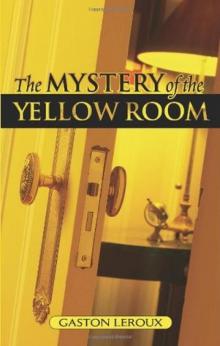 The Mystery of the Yellow Room
The Mystery of the Yellow Room The Secret of the Night
The Secret of the Night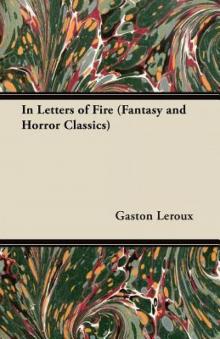 In Letters of Fire
In Letters of Fire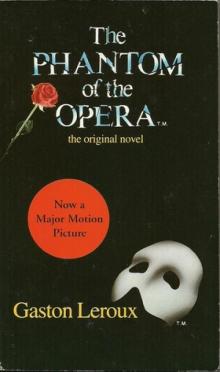 The Phantom of the Opera
The Phantom of the Opera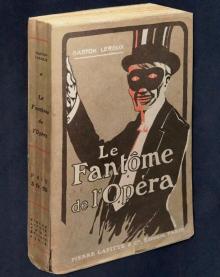 Fantôme de l'Opéra. English
Fantôme de l'Opéra. English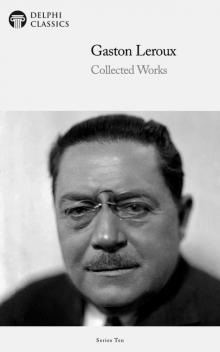 Collected Works of Gaston Leroux
Collected Works of Gaston Leroux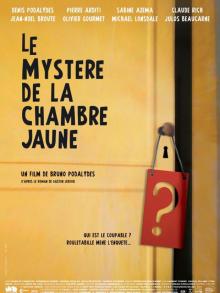 Le mystère de la chambre jaune. English
Le mystère de la chambre jaune. English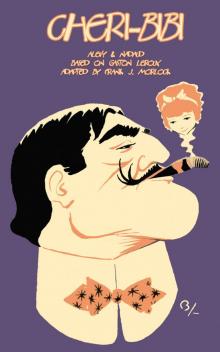 Cheri-Bibi: The Stage Play
Cheri-Bibi: The Stage Play The Phantom of the Opera (Oxford World's Classics)
The Phantom of the Opera (Oxford World's Classics)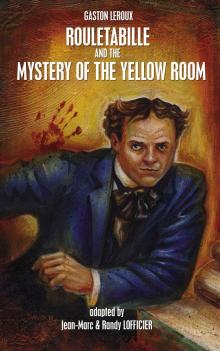 Rouletabille and the Mystery of the Yellow Room
Rouletabille and the Mystery of the Yellow Room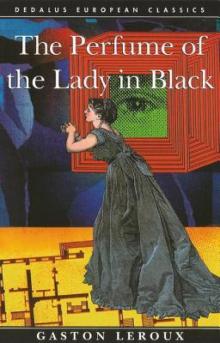 The Perfume of the Lady in Black
The Perfume of the Lady in Black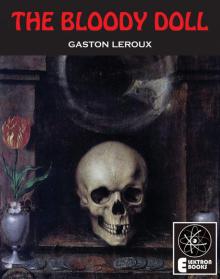 The Bloody Doll
The Bloody Doll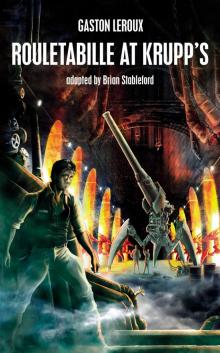 Rouletabille at Krupp's
Rouletabille at Krupp's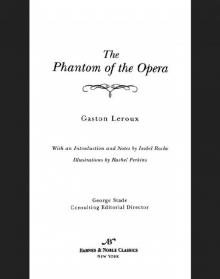 Phantom of the Opera (Barnes & Noble Classics Series)
Phantom of the Opera (Barnes & Noble Classics Series)